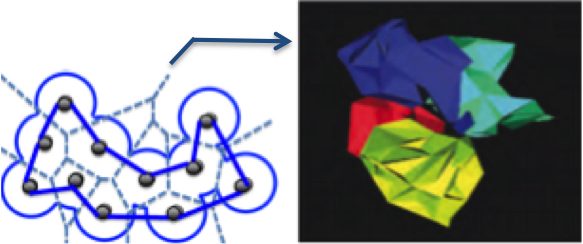A user-centric taxonomy for multidimensional data projection tasks
March 11th, 2015
Categories: Applications, Visualization, Visual Analytics

Authors
Etemadpour, R., Linsen, L., Crick, C., Forbes, A.G.About
When investigating multidimensional data sets with very large numbers of objects and/or a very large number of dimensions, a variety of visualization methods can be employed in order to represent the data effectively and to enable the user to explore the data at different levels of detail. A common strategy for encoding multidimensional data for visual analysis is to use dimensionality reduction techniques that project data from higher dimensions onto a lower-dimensional space. In this paper, we focus on projection techniques that output 2D or 3D scatterplots which can then be used for a range of data analysis tasks. Existing taxonomies for multidimensional data projections focus primarily on tasks in order to evaluate the human perception of class or cluster separation and/or preservation. However, real-world data analysis of complex data sets often includes other tasks besides cluster separation, such as: cluster identification, similarity seeking, cluster ranking, comparisons, counting objects, etc. A contribution of this paper is the identification of subtasks grouped into four main categories of data analysis tasks. We believe that this user-centric task categorization can be used to guide the organization of multidimensional data projection layouts. Moreover, this taxonomy can be used as a guideline for visualization designers when faced with complex data sets requiring dimensionality reduction. Our taxonomy aims to help designers evaluate the effectiveness of a visualization system by providing an expanded range of relevant tasks. These tasks are gathered from an extensive study of visual analytics projects across real-world application domains, all of which involve multidimensional projection. In addition to our survey of tasks and the creation of the task taxonomy, we also explore in more detail specific examples of how to represent data sets effectively for particular tasks. These case studies, while not exhaustive, provide a framework for how specifically to reason about tasks and to decide on visualization methods. That is, we believe that this taxonomy will help visualization designers to determine which visualization methods are appropriate for specific multidimensional data projection tasks.
Keywords: Multidimensional data analysis, task taxonomy, multidimensional data projection, user-centric evaluation.
Resources
Citation
Etemadpour, R., Linsen, L., Crick, C., Forbes, A.G., A user-centric taxonomy for multidimensional data projection tasks, In Proceedings of the International Conference on Information Visualization Theory and Applications (IVAPP), Berlin, Germany, pp. 51-62, March 11th, 2015.